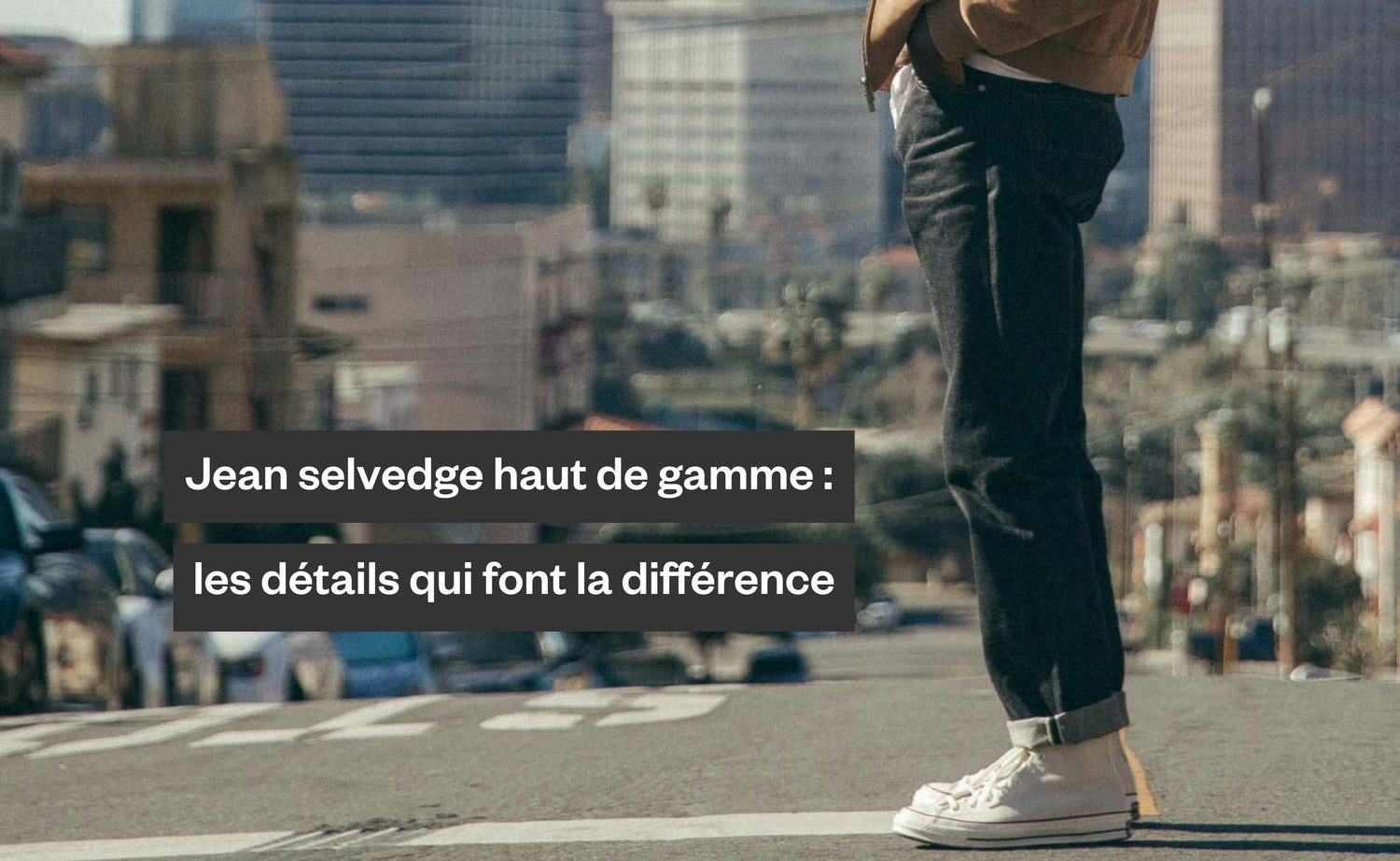You probably know how to choose men's jeans , what cut of jeans to choose , that you should take them slightly tight when buying, at the right size, with quality fabric.... but do you really know why certain jeans reach sometimes 300-400 euros?
That's what we're here for: in this article, you'll discover the characteristic details of high-end jeans .
Don't hesitate to look for them when you go shopping, it's fun and you will better understand the quality/price/brand ratio . Some jeans are totally worth the high price tag, while others are way too expensive for what they really are.
The selvedge canvas
This is the ultimate criterion for the quality of jeans. When an enthusiast comes across an interesting pair of jeans, the first question that comes to mind is: “is this fabric selvedge?”
Concretely, a selvedge canvas guarantees that its production was made on a vintage loom . Thus, the production of selvedge canvas is much slower than on contemporary looms, but this is also what brings these irregularities and this inimitable charm . If you're curious, we wrote an entire article about it, available right here .

This little red border means that you are in the presence of a selvedge canvas. Enjoy the moment.
Note: These fabrics are frequently referred to as "Japanese" as a misnomer, as Japan is today one of the largest producers of selvedge fabric. The know-how initially came from the United States (see the history of jeans ), the Japanese having perfected it and adapted it to their tastes by recreating or purchasing looms.
The selvedge ticket pocket
It's a real purist detail of course, but the ticket pocket can also have its little red border. By analyzing the quality of this type of finish, you will quickly realize the quality of the entire jean.

The clearly marked stopping point on the back pockets
You will see a thick seam that connects the corner of the pocket to the jeans.

This stitching allows the corner of the pocket to remain pressed against the canvas, and thus prevents any premature wear. This is the sign of robust manufacturing . However, keep in mind that some high-quality jeans may not have one.
Lined back pockets
A rather rare detail in most consumer brands. While not essential (a good canvas should be strong enough, and not require its own lining), linings are another element that helps assess the overall quality of a jean.

Copper rivets
First of all, know that jeans worthy of the name must have rivets on the pockets. This is also how we recognize them. The ultimate is when all the rivets on the jeans are made of copper, like the old fashioned way . Fans of vintage jeans are won over.

Chain stitch hem
You see that on the left the hem has more relief and seems to be thicker than its neighbor on the right; This is the hem with a chain stitch. We distinguish the chain stitch by the chain shape that the stitches take.
On the right, you have a simple hem found on the majority of mainstream jeans.


A double fly
Here is another extremely rare detail : if you see this type of lining on your fly, you are facing a meticulous manufacturer, who surely has a taste for things well made.
In the photo, note how clean the seams are . The benefit of such a finish? Slow down wear of raw edges. Another detail that makes the difference between ordinary jeans and enviable jeans.

How to interpret these details on high-end jeans?
The goal of this article is not to make you a denim ayatollah . That's how you get boring.
For example, if by some miracle you come across a pair of jeans that have all the details seen above, but are cut like a common sack of potatoes, move on.
Likewise, if you have a small budget and you come across a pair of simple, well-cut Zara jeans, don't be snobbish and say to yourself "there's no way I'm buying jeans that don't have a 'chain stitch hem'.
Keep in mind that you can't have it all , unless you spend a fortune on jeans. If the only one that suits you costs more than €150 but isn't even selvedge: take it. The goal is still to clothe yourself , not to make a collection of high-end jeans (some go crazy quickly).
And finally, we have our own jeans, always made with love:




